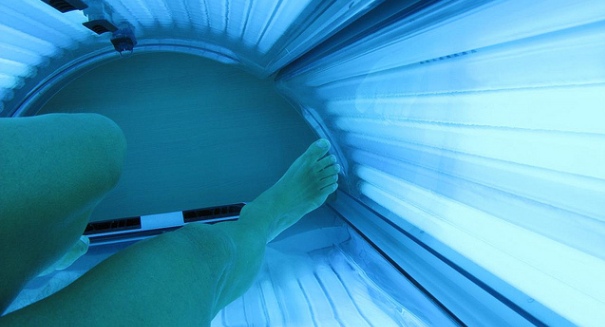
Four years after receiving their diagnosis, participants were presented with an online survey to fill out where 26 percent reported returning to the use of tanning beds.
New research has made an alarming discovery: one in seven people will continue to use tanning beds, even after a skin cancer diagnoses.
The study appeared recently in JAMA Dermatology and focused on 178 Connecticut skin cancer patients who admitted to using tanning beds prior to their cancer diagnoses.
The 178 patients included in the study were either white or non-Hispanic and included mostly women. All had been diagnosed with basal cell carcinoma, the most common form of skin cancer.
Four years after receiving their diagnosis, participants were presented with an online survey to fill out where 26 percent reported returning to the use of tanning beds. The median number of times those participants reported using tanning beds within the past year was 10, with some reporting use as much as 20 times.
Researchers found that among the participants reporting the most use of tanning beds prior to their skin cancer diagnosis, they were the ones most likely to still be using them after.
They also discovered that among the participants that continued to use tanning beds after diagnosis, 58 percent showed signs of “tanning dependence.” This rate was significantly higher than those who avoided using tanning beds after their diagnosis.
The president of the Canadian Dermatology Association, Dr. Richard Langley, told CTV News that he has numerous patients with skin cancer that continue to tan either by laying in the sun or by using tanning beds.
“What’s always surprising, both in this study and in prior research, is that the people who have a diagnosis of skin cancer, the ones who should be the most vigilant because they have been educated about skin cancer, are often the ones who are continuing to expose themselves to a known carcinogen,” he said.
Dr. Langley noted that people who have been diagnosed with skin cancer have a much higher risk of developing skin cancer again, including melanoma, the most lethal form. He went on to say it was difficult to understand why cancer survivors continue to take such risks.
While it still hasn’t been proven that tanning addiction is real, more and more medical professionals are beginning to believe a psychological dependency on tanning could be a very real thing. Some research has even suggested that people can become physically addicted to the endorphins released during UV light exposure.
“I think it’s still under-recognized, in part because it hasn’t been well documented in the medical literature,” Langley posited, noting that there have been less than 10 studies or articles published on the phenomenon.

Leave a Reply